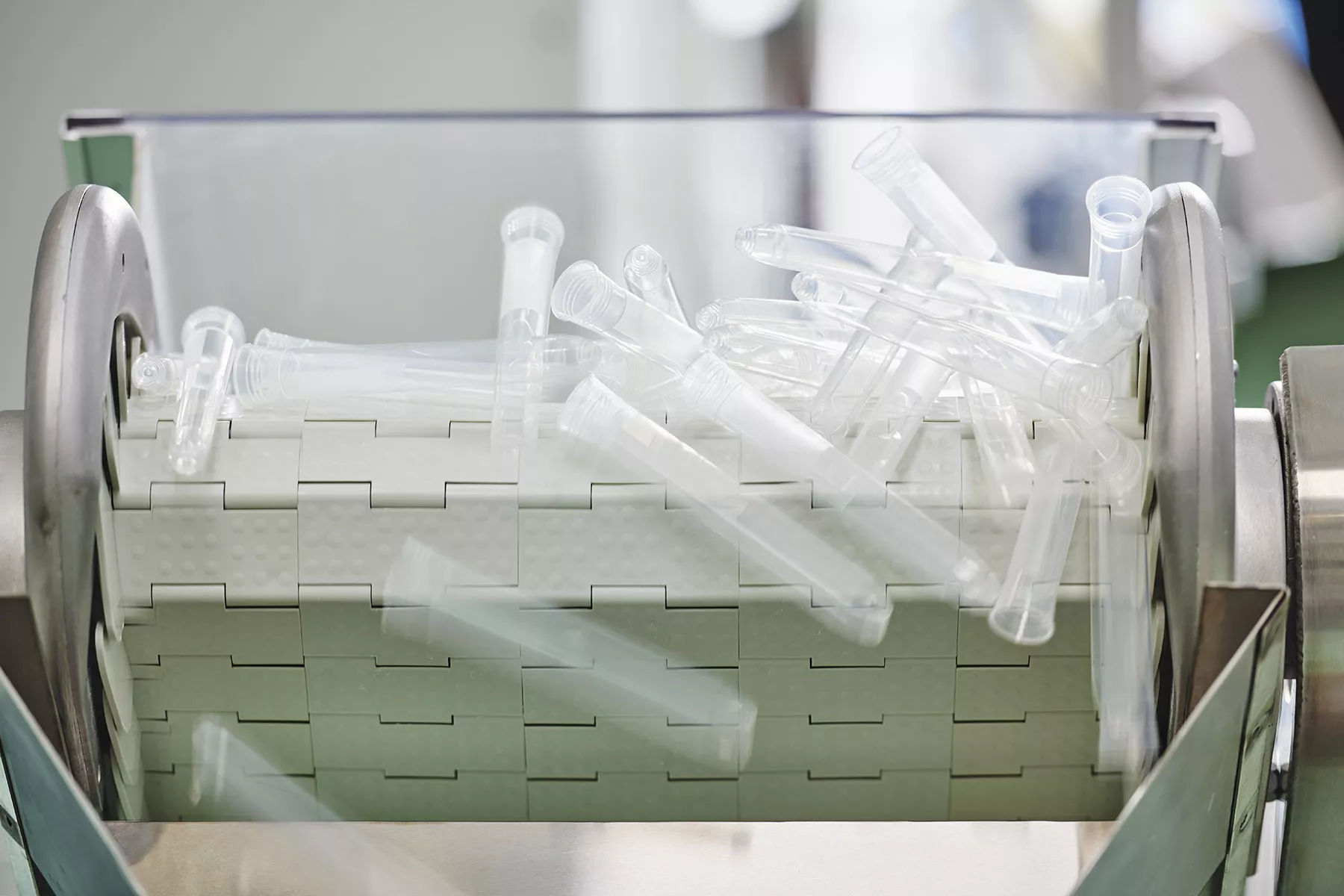How Injection Molding Revolutionizes Medical Device Manufacturing

Every day, billions of medical devices are produced: syringes for vaccination, pipette tips for laboratories, blood collection tubes, diagnostic plates. Behind this mass production lies one key technology: medical injection molding. By combining speed, precision, and cost efficiency, injection molding has revolutionized the manufacturing of medical devices, providing precision and efficiency in production.
What Is Medical Injection Molding?
Medical injection molding is a high-precision process where biocompatible polymers are melted and injected into carefully engineered molds. Medical injection molding in cleanroom environment is essential for producing a wide range of medical devices but also DNA/RNA free parts for diagnostics and Life Sciences industries: pipette tips, components for prefilled syringes, micro-plates, dental implants casings, ultrasounds probs,…
Efficiency and Cost Savings in Injection Molding
One of the main advantages of injection molding is its efficiency, as parts can be produced in seconds once a mold is created. Compared to machining, which can waste 70% of raw material, injection molding reduces waste to under 10%.
This has three major benefits:
- Lower cost per unit, especially for medium-to-high volumes.
- Faster scale-up, from pilot runs to millions of parts with minimal adjustments.
- Material savings, important when using expensive medical-grade polymers.
For companies under budget and time pressure, this efficiency directly translates into a competitive edge.
Applications of Medical Injection Molding
The applications of medical injection molding are vast, including components for prefilled syringes, laboratory consumables, and protective components – all requiring tight tolerances and biocompatibility – two strengths of injection molding.
- Components for prefilled syringes: syringe barrels, plunger rods, backstoppers, and needle caps.
- Laboratory consumables: pipette tips, PCR plates, and diagnostic housings.
Innovations in Injection Molding for Medical industries
Recent advances open new possibilities for device design:
- Micro-molding enables features under 100 microns.
- Overmolding combines multiple materials in one device.
- Multi-cavity molds produce dozens of identical parts per cycle.
- Automated assembly links molding to packaging, reducing contamination.
At SGH, robotized molding machines and cleanroom automation ensure compliance with ISO 13485 and smooth audits.
Quality and Regulatory Assurance
Compliance is built into injection molding. Full traceability of batches, automated inspection, and validated cleanroom processes simplify approval under MDR. For manufacturers, this means reduced regulatory risk and faster certification.
Key Takeaways for Healthcare Companies
Injection molding is not just about plastic—it is about scalable, compliant innovation. For companies developing new medical devices, it provides the speed, cost control, and precision needed to remain competitive. With partners like SGH, medical devices projects can move from design to industrialization faster and more securely.